A floor-cleaning robot with one of the best washing systems, but an app that still needs improvement.

Eureka is a company with a long-standing tradition in the household cleaning sector. We had the opportunity to test the J20, one of the first robots to introduce a self-cleaning tracked roller washing technology to the market, aiming to enhance cleaning performance. This model stands out for its innovative RollRenew washing system and commendable suction performance, although its app interface remains somewhat outdated, a factor Eureka is actively working to improve.
Disclaimer: At NonSoloRobot™️, we received the device for test, with no compensation or obligations. My review is impartial and independent: the goal is to offer a comprehensive overview of the product, based on an objective analysis. I will share my personal preferences only when necessary, highlighting what I believe are the strengths and areas for improvement, to help you make an informed decision based on your needs.
Package Contents Inside the Eureka J20 package, you will find:
The vacuum/mopping robot
The multifunctional docking station
A side brush
Two cleaning rollers, one specifically designed for carpets
A cartridge of cleaning solution
A pre-installed dust collection bag
These accessories ensure comprehensive and immediate use of the device.
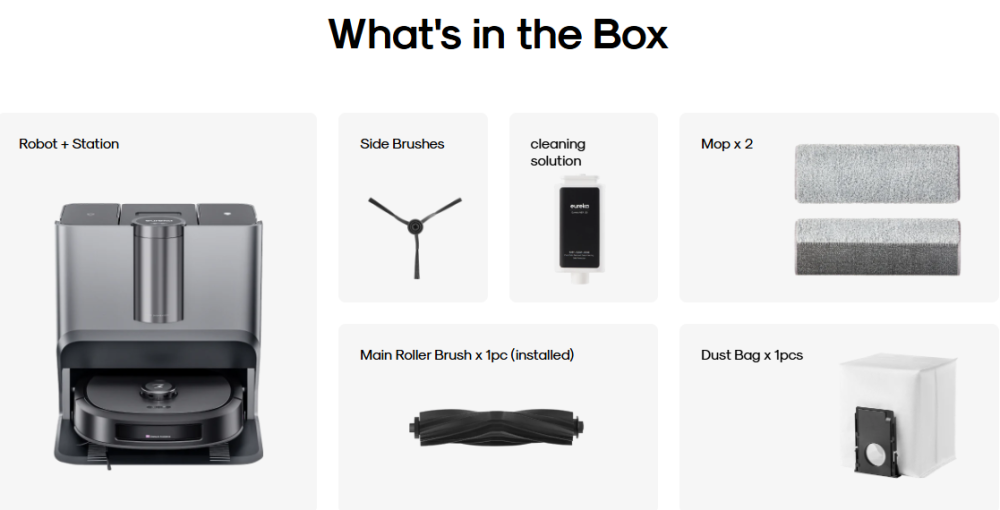
Design and Build Quality The J20 boasts a unique design with matte black finishes resistant to fingerprints and dust. Its squared, slightly ovalized shape differs from traditional circular robots, allowing easier access to tight spaces, such as between chair legs, and better reach into corners. At the top, a LiDAR tower facilitates precise navigation, accompanied by two physical buttons for manual control. On the front side, the DuoDetect AI system provides advanced obstacle detection. The high-quality materials and careful construction give the device a solid and premium appearance
Docking Station and Maintenance


The multifunctional docking station of the J20 measures 423 × 462 × 452.5 mm and automatically handles various operations:
Dust Emptying: The robot automatically empties its dust container into a 3-liter dust bag located in the docking station, significantly reducing the frequency of manual intervention.
Water Management: The base station is equipped with separate 3.5-liter tanks for clean and dirty water, allowing the robot to autonomously refill clean water, clean its mop, and empty the collected dirty water.
Automatic Detergent Dosing: Thanks to a 300 ml detergent cartridge, the base automatically dispenses the detergent for mop washing and refilling the robot’s internal tank.
Mop Cleaning and Drying: After each cleaning session, the mop is thoroughly washed with hot water and dried using air heated to 45°C, preventing mold and unpleasant odors.
These features simplify maintenance and ensure consistent performance over time. The entire system works exceptionally well, with the only issue being the cleaning of the mop washing basin, which tends to accumulate dirt. Users need to kneel down to clean it thoroughly; I recommend performing this task weekly if the robot is used daily. Additionally, it is crucial to regularly clean the filter inside the dirty water tank, fortunately, this component is well-engineered, easily removable, and simple to clean. Regular maintenance is fundamental to preserving the robot’s excellent cleaning performance.

Robot and Technologies
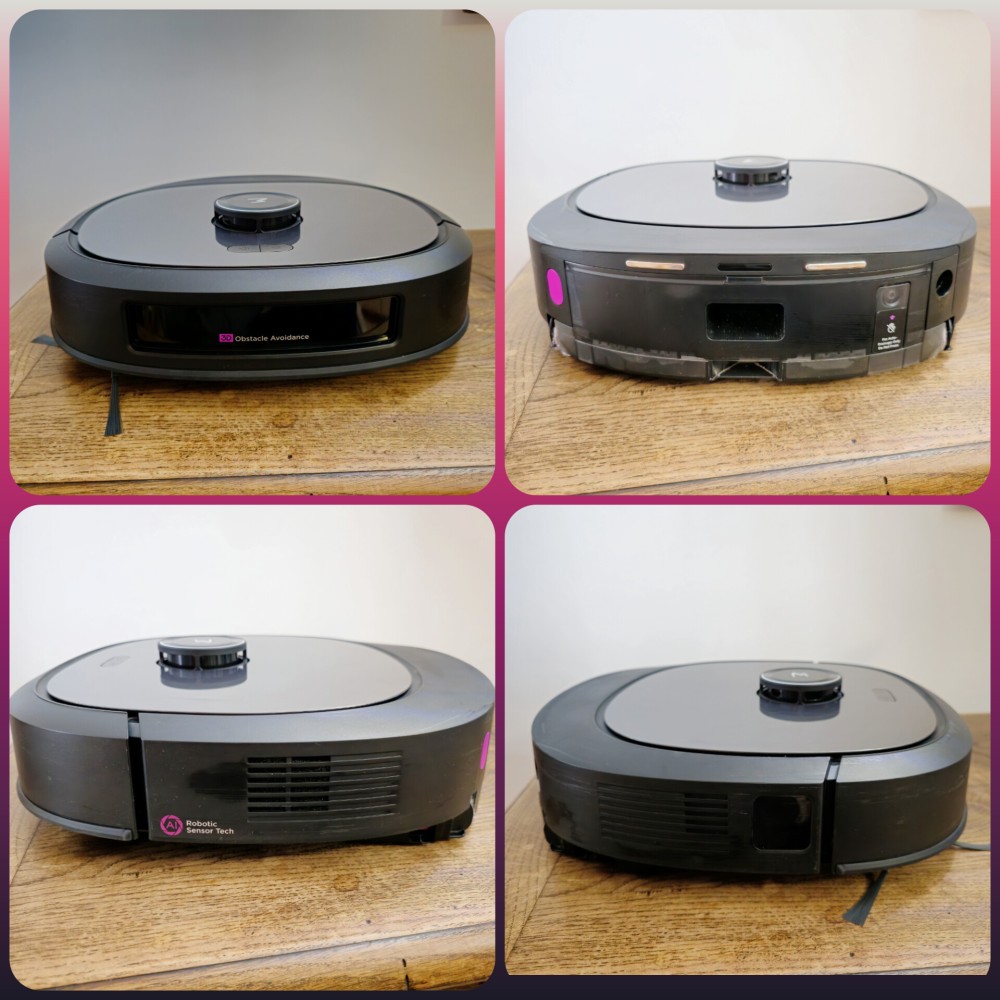


Navigation and Detection Technologies
The J20 utilizes a combination of front laser sensors known as DuoDetect AI, a side proximity laser sensor, and an upper LiDAR turret for navigation and obstacle detection. These technologies enable the robot to create detailed maps of the home environment, ensuring precise navigation as long as no obstacles are encountered. When encountering an obstacle, the robot does not have issues avoiding it per se, but due to the absence of a camera or advanced recognition system, it relies on rather basic, “old-school” avoidance strategies. The lack of a camera also presents challenges in detecting smaller objects such as keys, pens, cables, and even some shirts left on the floor. However, it has no difficulty handling larger objects like shoes, slippers, pet bowls, or toys left lying around, provided they are not excessively small.



Suction Performance
With a suction power of 8,000 Pa, the J20 might not impress compared to recent top-tier models, but it effectively removes dust, debris, and pet hair from various surfaces, including carpets. The central brush, featuring a combination of rubber and bristles, lacks an anti-tangle mechanism but is designed well enough to minimize hair tangling. A fully rubber brush is also available, although both brushes require regular cleaning to maintain optimal performance.
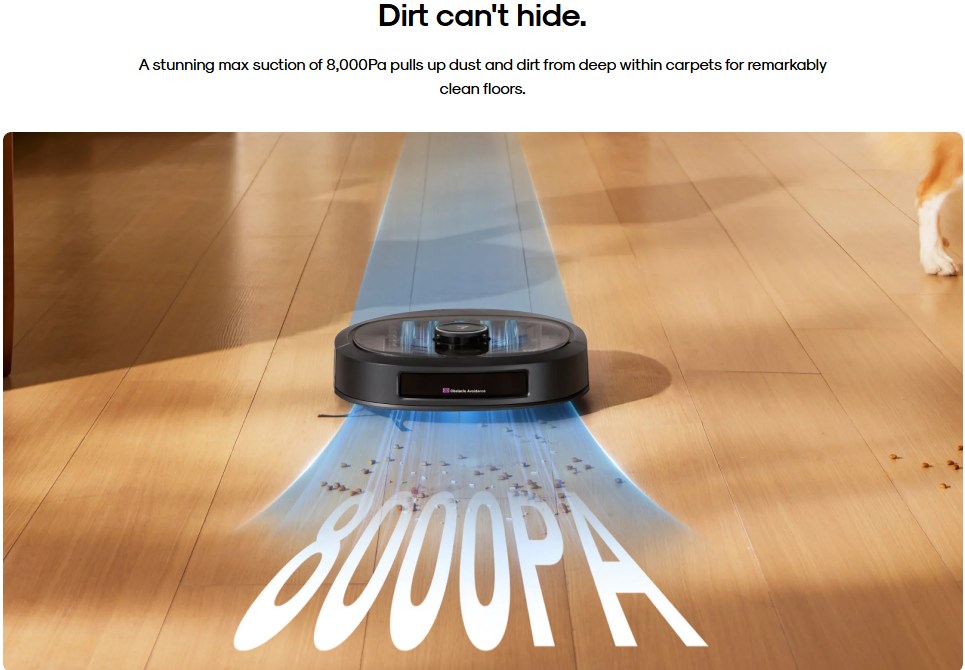
Mopping Performance
The RollRenew washing system sets the J20 apart from many competitors, making it one of the best floor-cleaning robots currently on the market. It features a high-quality tracked mop that exerts a pressure of 17 N on the floor. Unlike traditional round rollers, the tracked shape significantly increases the mop’s surface area in contact with the floor. Furthermore, the mop is continuously moistened with clean water from the internal tank and cleaned of dirty water via an integrated scraper, ensuring it always washes with fresh water and detergent. Meanwhile, the dirty water is sucked into a dedicated internal reservoir. This method prevents dirt from being dragged across the floor—an issue common with other mopping systems, and the increased surface area combined with applied pressure effectively removes even stubborn stains.
Despite newer competing models introducing similar self-cleaning roller systems, I still consider this technology among the best available, especially for users like myself who place a high value on mopping performance. The only drawback noted is that the robot lacks edge-cleaning capability, leaving an unwashed strip approximately 1.5 to 2 cm wide along edges.




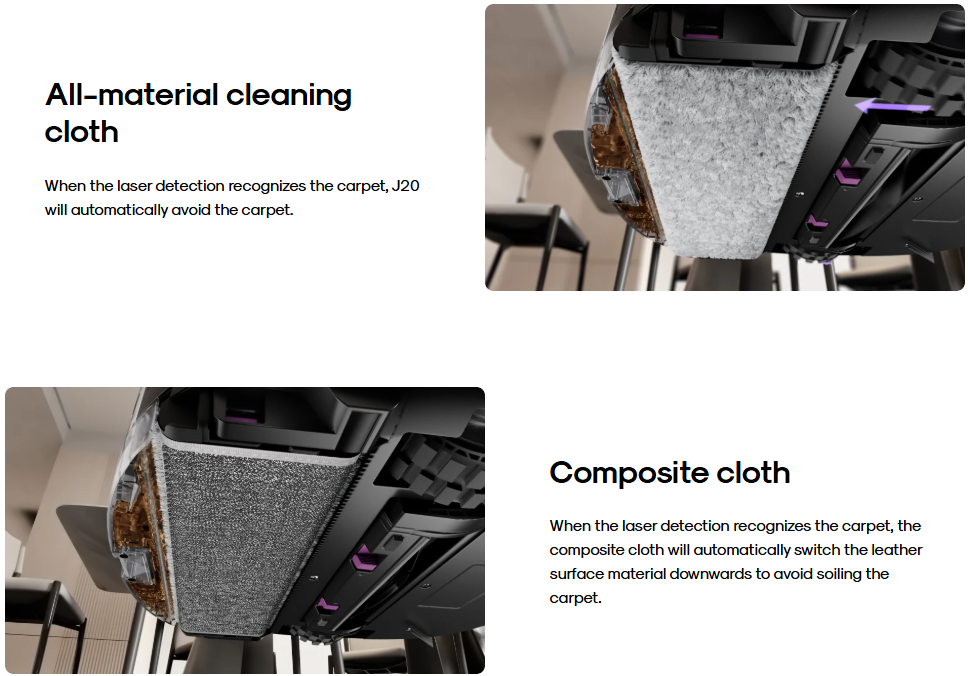

Carpet Management
Since the J20 lacks a roller lifting mechanism to handle carpets, it includes a second roller with one half featuring a “fluffy” texture and the other half being waterproof. When the robot detects a carpet using its ultrasonic sensor, it rotates the roller, placing the waterproof side downward, thus avoiding wetting the carpet and simultaneously increasing suction power. Changing the roller requires manual intervention whenever carpets need to be vacuumed, but I consider this a reasonable compromise given the high-quality mopping provided. The dedicated roller has proven effective at keeping carpets dry.

Application and Software
The J20’s associated application provides all the essential features, including cleaning scheduling, cleaning history logs, and customization of settings. It also allows customization of drying times (4 or 6 hours), auto-emptying frequency, and toggling automatic detergent dispensing on or off. Complementary functions include firmware updates, button lock settings, robot language selection, and a consumables management section.
These features represent what the app offers and handles well; now let’s address the aspects that are lacking or problematic. Starting with map management, which is very basic, users can customize rooms and rename them, although the predefined room names available are very limited, forcing users to resort to custom names, which notably can create issues when integrating with virtual assistants such as Google Assistant or Alexa, although Eureka’s app supports both. There is no option to select floor type or cleaning direction. Users can set virtual walls and no-go zones but not specific no-mop zones, though this functionality is indirectly available thanks to the carpet roller. Another minor inconvenience is the need to manually reactivate carpet detection each time the carpet roller is reinstalled, even though this setting should ideally be a default option. Additionally, the app lacks a map backup function, so if any map-related issues occur, remapping is required.
There’s also a vaguely explained feature intended to activate a fan to remove odors, which I tested by keeping activated and deactivated for equal durations without noticing any significant difference. I emphasize “vaguely explained” to highlight the most significant shortcoming of the J20, which, in my opinion, is its app and software. The interface feels similar to robot vacuum apps from three to four years ago, with no tooltips or explanatory pop-ups to help users understand various functions. Initially, it had numerous bugs and slowdowns, and simply changing the robot’s voice could cause it to become silent until reset.



Fortunately, in recent months, thanks also to feedback from dedicated testers and users, the app has become more stable and user-friendly. This improvement benefits both existing owners and potential buyers and demonstrates that Eureka genuinely listens to user feedback, continuing to support a product that’s already been on the market for some time. This approach contrasts positively with the current market trend of frequently releasing new models every few months, while ceasing improvements and updates for older products.

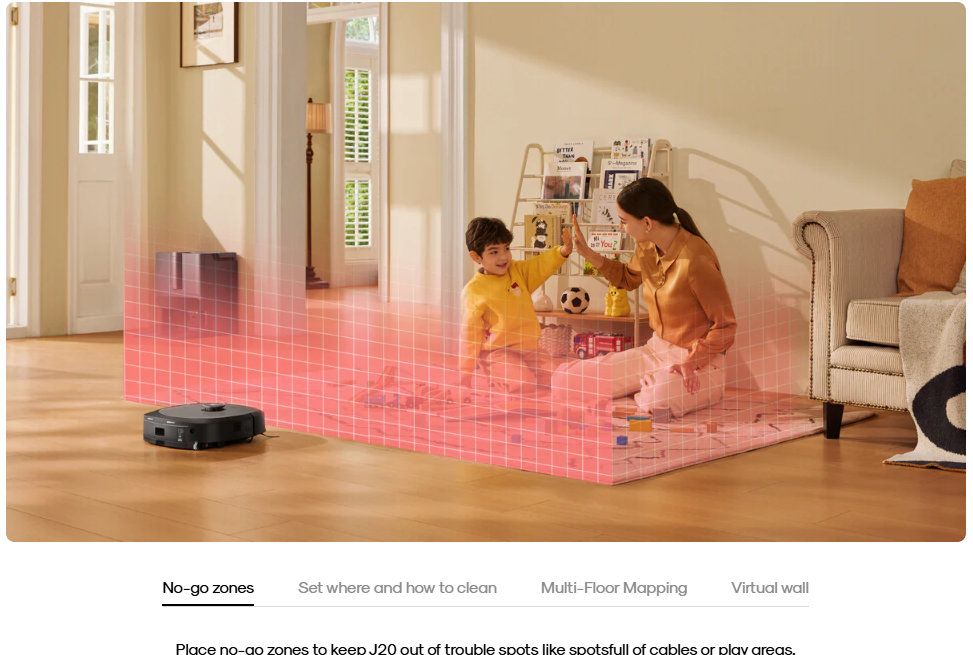
Conclusion
The Eureka J20 is a solid and reliable mopping robot, primarily focused on delivering high-quality floor cleaning, and it excels in this task.
The RollRenew technology still places it among the best options available for floor cleaning today, thanks to its effective and well-designed system. The docking station is complete, practical, and functional.
Certainly, the software still lags behind the latest top-tier models, but Eureka is clearly demonstrating commitment and attention to continuous improvement, which is a positive sign for long-term support.
I recommend this robot especially for users who prioritize mopping performance and seek a reliable device, despite accepting some compromises regarding app functionality.
AMAZON AFFILIATE LINK
Product Page
Eureka Community Italia
NonSoloRobot™️